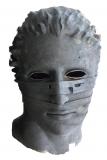Results 1 to 4 of 4
Thread: Noob questions about 3d Printing
-
09-22-2015, 04:48 PM #1Student

- Join Date
- Sep 2015
- Posts
- 20
Noob questions about 3d Printing
I am looking for a local business opportunity, here in my city the 3d business is not exploited yet. I can foresee good business opportunities:
1. Create 3d objects by requests
2. Create easy 3d objects for sale, eg:
iphone stands, iphone cases and other stuff.
3, Universities dont each anything about this, and maybe in the education sector I could foresee teaching about this topic.
I have read more or less 1 week about this, but some things are not very clear to me:
1. If I buy a printer, which parts need frequent replacement and I should buy some extras? Nozzles? other parts?
2. Why would I buy a Kit instead of an assembled printed?
3. As far as I know its only to print things with one color filament? Example if I want to print a 3D Minion with the yellow, black and blue, I cant with any printer?
4. If I want a printer that uses the most kind of materials, what should I look for? I see most printers are compatible with ABS and PLA, but what about if I want to use Nylon, Metals, Carbon?
How is quality measured? in Microns? I saw one with 20 Microns, what does that exactly mean? will it create better curves? better complex intersections?
Lets talk about a cube, if I want to print something solid, is that something the printer does, or the designer has to do it in the 3D Software?
-
09-23-2015, 02:38 AM #2
Hi levalencia
Please excuse me for being blunt, but there is a post with the same questions every month or so on this forum. I would advise to take some time and look them up.
Most replacement parts are easily bought on the internet (fans, bearings, rails, ...). Only the hot end / boards / print plate have a chance to be brand specific (but for some really open source builders, that is not even the case). Nozzles have a tendancy to wear fast with some specialty materials like carbon fiber filled filament.
Most people agree that kit printers have the advantage that you know them better once you have built them and so you're more able to troubleshoot them yourself. There might be a slightly lesser quality depending on your proficiency. Many established sellers are moving away from those as they end up more costly in warranty for the seller : people mix up stuff too much.
There are techniques to print multiple colours with a printer : you can find some details in this forum. Mainly 6 techniques but you can find more :
- single head : pause and change filament (works well if colours are on different planes)
- multiple heads (like my metal plus dual)
- dying the material in advance : a bit random
- using the palette to precut the colored filaments to correct lengths : still a prototype
- single head : print all colours separately and assemble
- mixing head like the diamond : not sure of the result
Specialty materials require a mix of the following :
- all-metal high temp hot end (over 240°C) with high temp thermistor
- heat bed
- enclosure
- enclosure with temp control
-high amp power
Depending on what you want, you need all or part of the above. Having all of those will improve quality even for materials that don't NEED it.
Precision is something that is hard to discuss for several reasons as you can see in this forum. It is highly dependant on the print layer height you elect to use, the warping factor of the material you use, the concervion of your 3D file to STL, the mechanical precision of the printer is less an issue than its repeatability.
I don't understand the last part.
-
09-23-2015, 08:30 AM #3Student

- Join Date
- Sep 2015
- Posts
- 20
-
09-23-2015, 01:47 PM #4Staff Engineer

- Join Date
- Jan 2014
- Location
- Oakland, CA
- Posts
- 935
[Both. If you design a hollow cube, the printer will print it hollow (assuming the walls are thick enough to print at all). If you design it solid, the printer will either print it solid, or it can print the walls solid and the inside less solid.]
Andrew Werby
www.computersculpture.com




 Reply With Quote
Reply With Quote






Ender 3 Neo - Jam Problem
Today, 10:12 AM in Tips, Tricks and Tech Help